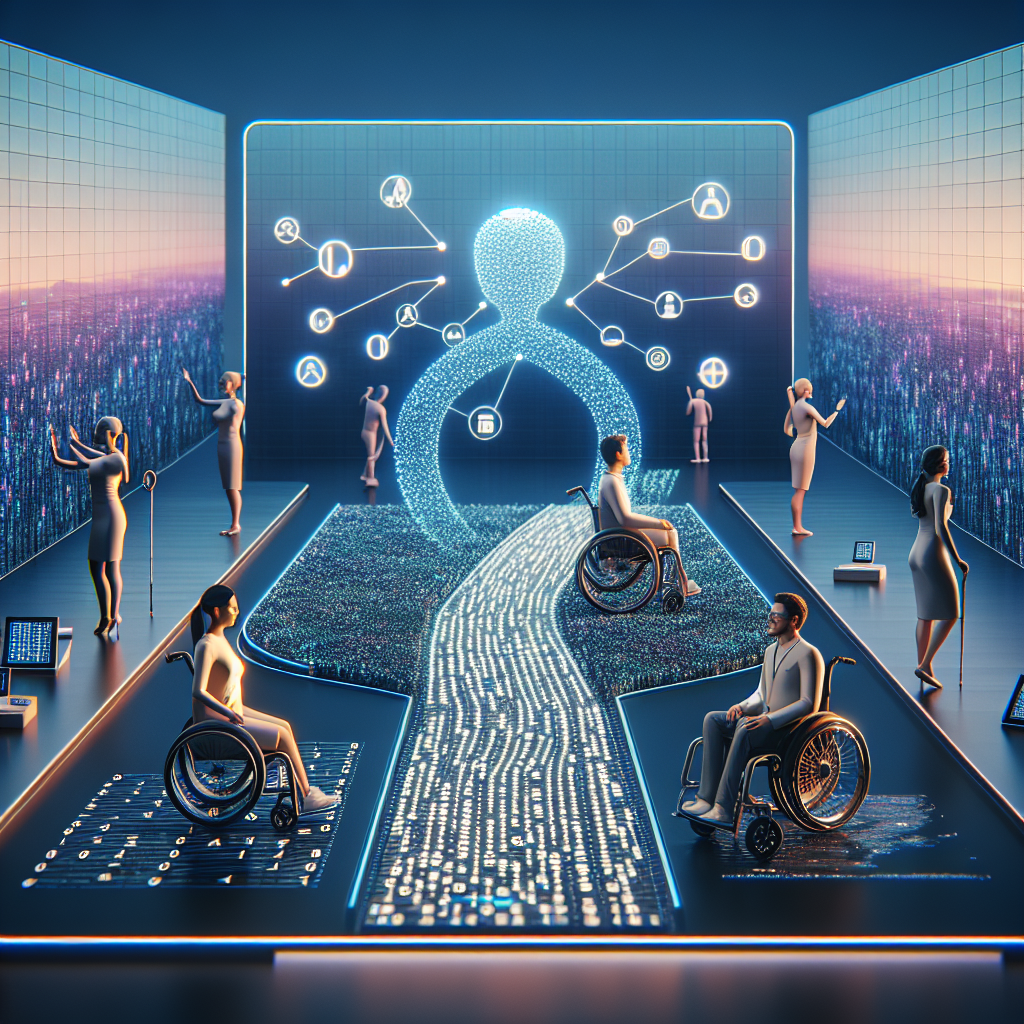AI Software: Improving Accessibility for People with Disabilities
In recent years, artificial intelligence (AI) software has made significant strides in improving accessibility for people with disabilities. From text-to-speech applications to image recognition technology, AI has the potential to revolutionize the way people with disabilities interact with the world around them. In this article, we will explore some of the ways AI software is being used to enhance accessibility for individuals with disabilities and the benefits it brings.
One of the most common uses of AI software for people with disabilities is in the realm of communication. For individuals who are deaf or hard of hearing, AI-powered speech recognition software can transcribe spoken language into text in real-time, allowing them to participate in conversations more easily. This technology can also be used to provide captions for videos and other multimedia content, making it more accessible to those with hearing impairments.
Similarly, text-to-speech software can help individuals who are blind or have low vision to access written information more easily. By converting text into spoken language, AI software can enable people with visual impairments to read emails, articles, and other text-based content without the need for a screen reader. This can greatly improve their ability to stay informed and connected in a digital world.
AI software is also being used to improve accessibility in the physical environment. For example, smart navigation systems powered by AI can help individuals with mobility impairments to navigate public spaces more easily. These systems can provide real-time information on accessible routes, elevators, and other amenities, making it easier for people with disabilities to get around independently.
In addition, AI-powered image recognition technology is being used to help individuals with visual impairments identify objects and navigate their surroundings. By using a smartphone camera or other device, individuals can take a picture of an object and receive spoken feedback on what it is. This can be particularly useful in unfamiliar environments or when trying to identify items that are not easily distinguishable by touch alone.
Another area where AI software is making a difference for people with disabilities is in the realm of assistive technology. For example, AI-powered prosthetic limbs can provide more natural and intuitive movement for individuals with limb loss. By using sensors and AI algorithms, these devices can adapt to the user’s movements and provide a greater range of motion and functionality.
AI software is also being used to improve accessibility in education and employment. For students with disabilities, AI-powered learning tools can provide personalized support and accommodations to help them succeed in school. These tools can adapt to the student’s individual learning style and needs, providing additional resources and assistance as needed.
In the workplace, AI software can help individuals with disabilities to perform their jobs more effectively. For example, speech recognition software can enable employees with mobility impairments to dictate emails and documents more easily, while text-to-speech software can help individuals with visual impairments to access written information. These tools can level the playing field for employees with disabilities and enable them to contribute their talents and skills to the workforce.
Overall, AI software has the potential to greatly enhance accessibility for people with disabilities in a wide range of areas. By providing innovative solutions to common barriers, AI technology can empower individuals with disabilities to live more independently, participate more fully in society, and achieve their goals and aspirations.
FAQs:
Q: How is AI software being used to improve accessibility for people with disabilities?
A: AI software is being used in a variety of ways to improve accessibility for people with disabilities, including in communication, navigation, image recognition, assistive technology, education, and employment.
Q: What are some examples of AI-powered assistive technology for people with disabilities?
A: Examples of AI-powered assistive technology for people with disabilities include speech recognition software, text-to-speech software, smart navigation systems, image recognition technology, and prosthetic limbs with AI capabilities.
Q: How can AI software benefit individuals with disabilities in the workplace?
A: AI software can benefit individuals with disabilities in the workplace by providing tools and accommodations that enable them to perform their jobs more effectively. This can include speech recognition software, text-to-speech software, and other assistive technology.
Q: What are some of the challenges and limitations of using AI software to improve accessibility for people with disabilities?
A: Some of the challenges and limitations of using AI software to improve accessibility for people with disabilities include the need for ongoing development and refinement of the technology, potential biases in algorithms, and concerns about data privacy and security.
Q: How can individuals with disabilities access AI-powered accessibility solutions?
A: Individuals with disabilities can access AI-powered accessibility solutions through a variety of means, including through assistive technology providers, disability organizations, and specialized software applications. It is important to research and choose solutions that meet the individual’s specific needs and preferences.

